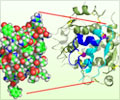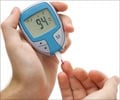- Diabesity: an overview of a rising epidemic - (http://ndt.oxfordjournals.org/content/early/2010/11/02/ndt.gfq576.abstract)
- Searching QTL by gene expression: analysis of diabesity - (http://www.ncbi.nlm.nih.gov/pmc/articles/pmc555939/)
- http://ndt.oxfordjournals.org/content/early/2010/11/02/ndt.gfq576.abstract
- Salmeron J, Manson JE, Stampfer MJ, Colditz GA, Wing AL, Willett WC. Dietary fiber, glycemic load, and risk of non-insulin-dependent diabetes mellitus in women. JAMA. 1997;277(6):472-477.
- Dietary curcumin significantly improves obesity-associated inflammation and diabetes in mouse models of diabesity. - (http://www.ncbi.nlm.nih.gov/pubmed/18403477)
About
With more than one billion people affected,
Diabestity is a term coined to indicate instances where diabetes is caused by obesity. The word very aptly illustrates the intimate relationship of diabetes with obesity. It is known that excess weight in majority of patients is responsible for type 2 diabetes. This leads to insulin resistance and results in group of symptoms of a metabolic disorder known as
Pre-diabetes,

Diabesity is the leading cause of the most chronic disease of the modern world. If you have diabesity, you are at an increased risk for high blood pressure, heart disease, stroke, dementia, and even cancer and kidney failure. Severe diabetes causes nervous system damage leading to loss of sensation in hands and feet, and carpal tunnel syndrome among host of other dysfunctions.
Diabesity is a serious global health problem. Type-2 diabetes, which makes up 90 percent of all diabetes cases, affects about 6 percent of the total adult population in the world. More worrying is the fact that cases of obesity related
In her book ‘Diabesity’ Dr. Kaufman explains the reason for diabesity quite simply: "Our ancient genes and our modern environment have collided." Our forefathers hunted for food and calories were hard to come by so it was stored as fat. But in the world today food is everywhere and easily accessible as fast food and junk food and added to this has been our increasingly inactive lifestyle – resulting in obesity.
Diabesity can be treated and even reversed if we modify our lifestyle, but we have to delve into the root cause of this disorder to correct it.































